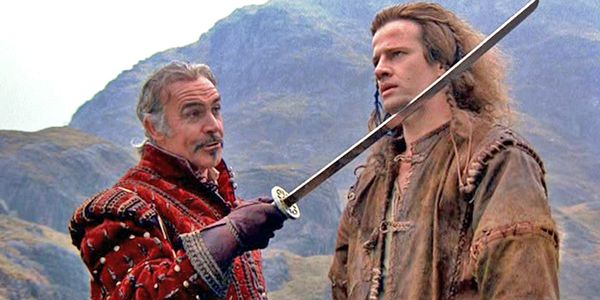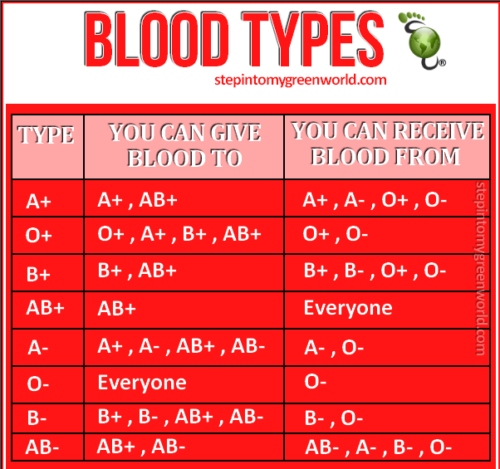Most people are interested in where they come from. There is a basic human desire to identify your people and learn their customs and tales. For some, it is as easy as talking to their grandparents. Many of us never had the chance to learn from family. There is another option, DNA testing. If you have a hole in your family tree, you might consider filling it in.
This may seem like a small thing and DNA data can seem impersonal; I assure you it is not. I was adopted and the only people with my last name who share my DNA are my children. I never met my father or any of his family. I knew my mother and some of her family, but never got to talk with my grandparents. My mother was the youngest of seven children. I only meet two of her siblings.
When I went into the Army, they told me my blood type, AB+. What does this mean? There are three factors in human blood that they have found that are important for transfusion compatibility; A, B and the Rhesus factor (+and -). The O blood type represents the absence of A or B. My ancestors bred so indiscriminately that I had every factor present in any humans anywhere. I am the universal recipient, no matter who you are, I can take your blood. I would give you some of mine, but unless you are one of the 4% of humans who have AB+ blood, it would probably kill you. So I have that going for me, self serving DNA.
Having widely separated ancestors has advantages. I remember my first team sergeant, Al getting into a base camp discussion on eugenics with the commo guy. Al was a dairy farmer who had run a battalion of Cambodian mercenaries in Vietnam. He had married a Cambodisn woman and brought her back to the farm in Pennsylvania. The como guy had been reading about eugenics and talking about racial purity. Al said, “I don’t know much about eugenics, but any farmer can tell you when you breed similar animals, it is inbreeding and it is bad. When you breed animals of different stock, you create a hybrid which is good”.
With this small sample of my mother’s family, I knew that some of my ancestors were Scots-Irish who came to America in the early 1700’s. These hardy immigrants spread through the southeast and provided generations of soldiers for America. So far so good, but it was word of mouth with little data.
My Australian claim their national character was shaped by the fact that their ancestors were prisoners. What you may not know is that in the 1600’s, long before Botany Bay, the Crown was sending convicts to the American colonies. This is the period when many of my ancestors arrived in America. Coincidence or criminal conviction?
This practice ended with the start of the American Revolution. An alternative site was needed to relieve overcrowding of British prisons. In 1770, James Cook charted and claimed possession of the east coast of Australia for Britain. In 1787, eleven convict ships set sail for Botany Bay to found Sydney, New South Wales, the first European settlement on the continent.
I was told that my father was born in Cuba, but my mother knew little other than a name. At my mother’s funeral, I was approached by a man claiming to be my father. He told a convincing story, he had been married to my mother. I asked that he take a paternity test. We both gave a blood sample and were found to be unrelated. It was a surreal experience at a very emotional time. I had reduced the numbers of potential fathers by one.
Some what later, I decided to get a DNA test and see what science could tell me. I went with Ancestry.com and the process was very simple. The answers I got generated more questions. Turns out I was 59% English/Welsh/Northern Europe, and 21% Scottish, 15% Spanish and 5% Norwegian (because Vikings). This doesn’t seem like the DNA of a guy with 50% Cuban genes. The folks at Ancestry will tell you this is an approximation, but some big science went into those numbers. They even linked me to a wave of settlers who came to South Carolina in the 1700’s.
This is where things get interesting. Ancestry checks their records and shows you people who match your DNA. You can opt out of this if you don’t want the attention, but part of the fun is seeing matches. You can pick a user name and the only way people can contact you are through the site.
My closest matches were cousins. Even with user names I quickly figured out who my highest percentage matches were by their family trees. They were all children or grandchildren of my mother’s siblings. This showed that the system worked and I sent a few messages to long lost cousins.
The next names were 3rd cousins and there were some Spanish surnames coming up, but they didn’t have trees associated with them. Dead end. There is an extensive search feature for a huge data base containing all kinds of documents. I put my fathers name in and got nothing back.
One of my cousins on my mother’s side had done some extensive research and I was soon able to see all of my great grandparents on my mother’s side, most with pictures. With a feature called ThruLines, Ancestry found my DNA matches and compared our trees. I was quickly back to the early 1700’s in several different lines.
I learned some interesting things. My ancestors came over from Scotland and England in the very early 1700’s. I didn’t realize we had been here so long. Almost all of them moved into the southeast. U.S. Documents on the site showed that they were soldiers in every war back to the Revolution. I have at least two direct ancestors who fought in the Revolution who are linked to me by DNA matches so this is not just a list of names. I was surprised how much detail was present in the documents, even 300 years back.
As one of my mother’s lines reached back to England in the 1600’s, the complete absence of my fathers lines was stark. I started going through my DNA matches, hoping for some breakthrough. I had DNA matches, but without a family tree to link, there was no way to see my relationship. I also had the question of where my DNA came from. How could I have 59% English DNA with a Cuban father?
One of my DNA linked 3rd cousins was an amateur genealogist who mentioned in the profile that they would be happy to help others find paternity and lost family. I sent them a message and two days later got a partial tree back with my father’s exact name and his parents and grand parents. There were even a couple of pictures. A cousin on my father’s side had posted pictures of our grand parents and great grand parents.
I was pretty quickly able to fill in some blanks and finally got some ThruLines on my fathers side so I knew the DNA confirmed my new tree. Now I could tell my kids where we come from. The numbers on my DNA finally started to make some sense as I traced the lines of my father’s family.
My father was born in Cuba. He had three last names under a very old Spanish naming convention. His father was born in northern Spain with family connections to France and Portugal. His mother was born in Cuba with most of her family lines running back to old families in Spain. I can trace one line to the 1400’s before Columbus. Her people came to Cuba in the 1600’s with one glaring exception. Her great grand father was born in Scotland. This was a connection that I had been missing. Once again, the DNA and the tree matched up.
Most of us tend to look for the line that has our last name. When you look at the tree, you realize that you have many more relatives with other last names. Only one of your four grandparents has your last name, one of eight of your great grandparents. There is a feeling of kinship with people who share our name but you have dozens of other last names you may not realize.
Many of us don’t have full information on our families. Even those who do may find some surprises when they look at DNA. Husbands aren’t always fathers. We are related to millions of people. In the Ancestry data base I have over 1000 DNA matches to 4th cousins and closer. This is an amazing resource and the stores that are revealed in the documents provide inspiration.
We are here at the end of a chain of survivors. Our ancestors faced hardships and challenges we can barely imagine. Through DNA and genealogy, we can find their stories and relate history to our predecessors. I was watching “Outlander” while working on my tree. I had ancestors on both sides of the field at the battle of Culloden and my Scots came to America before and after the battle.
If you didn’t know one or both of your parents. You can find your heritage and see how you connect to millions of family members and ultimately, all humans. You have never been alone, you are surrounded by thousands of family members that perhaps you just don’t know.
Featured Image: Scene from the movie “Highlander” courtesy of Thorn EMI Screen Entertainment. Knowing that I had family in the highlands and Spain back to the 1600’s, this film is a lot more personal now. I am a highlander and a Spaniard.
*The views and opinions expressed on this website are solely those of the original authors and contributors. These views and opinions do not necessarily represent those of Spotter Up Magazine, the administrative staff, and/or any/all contributors to this site.


